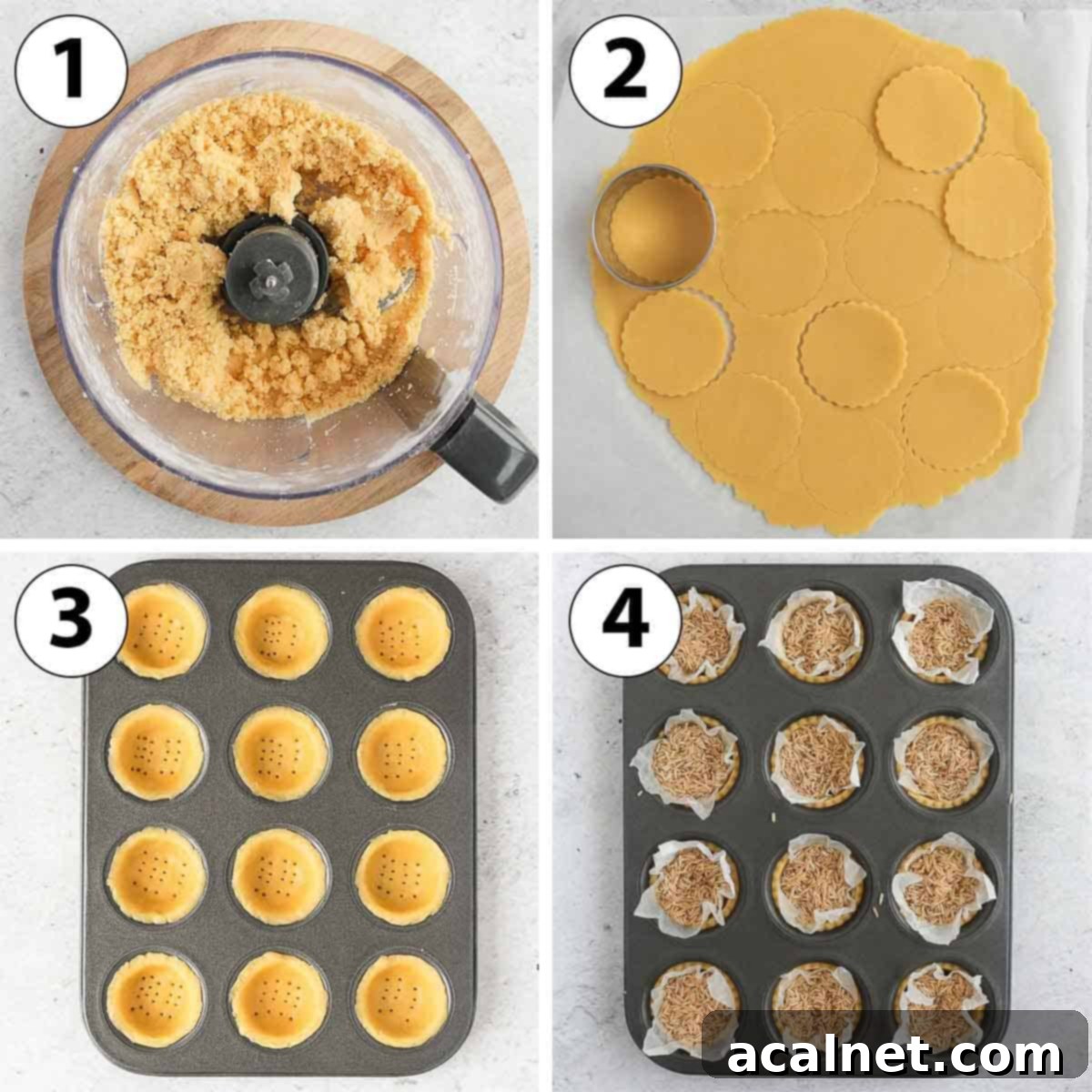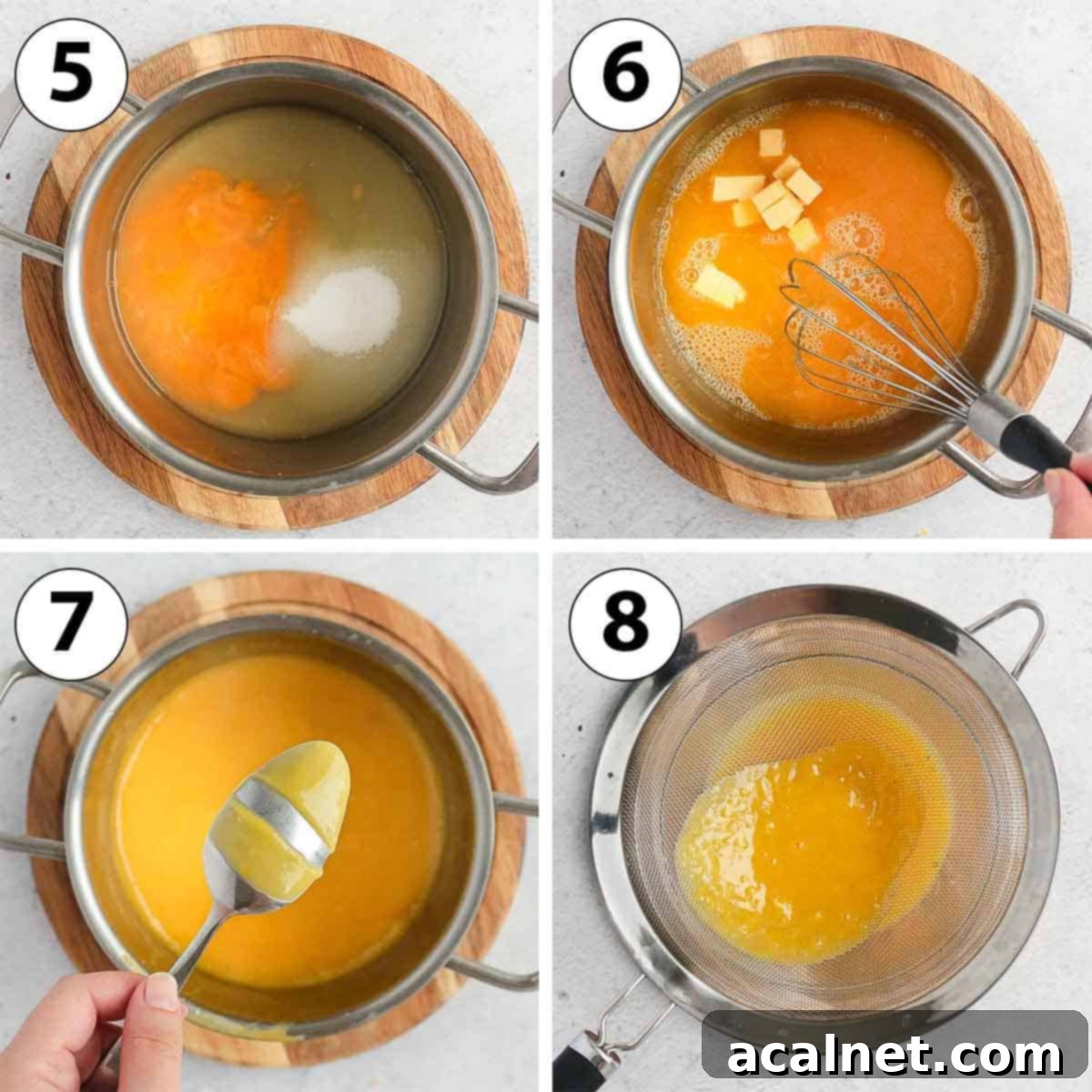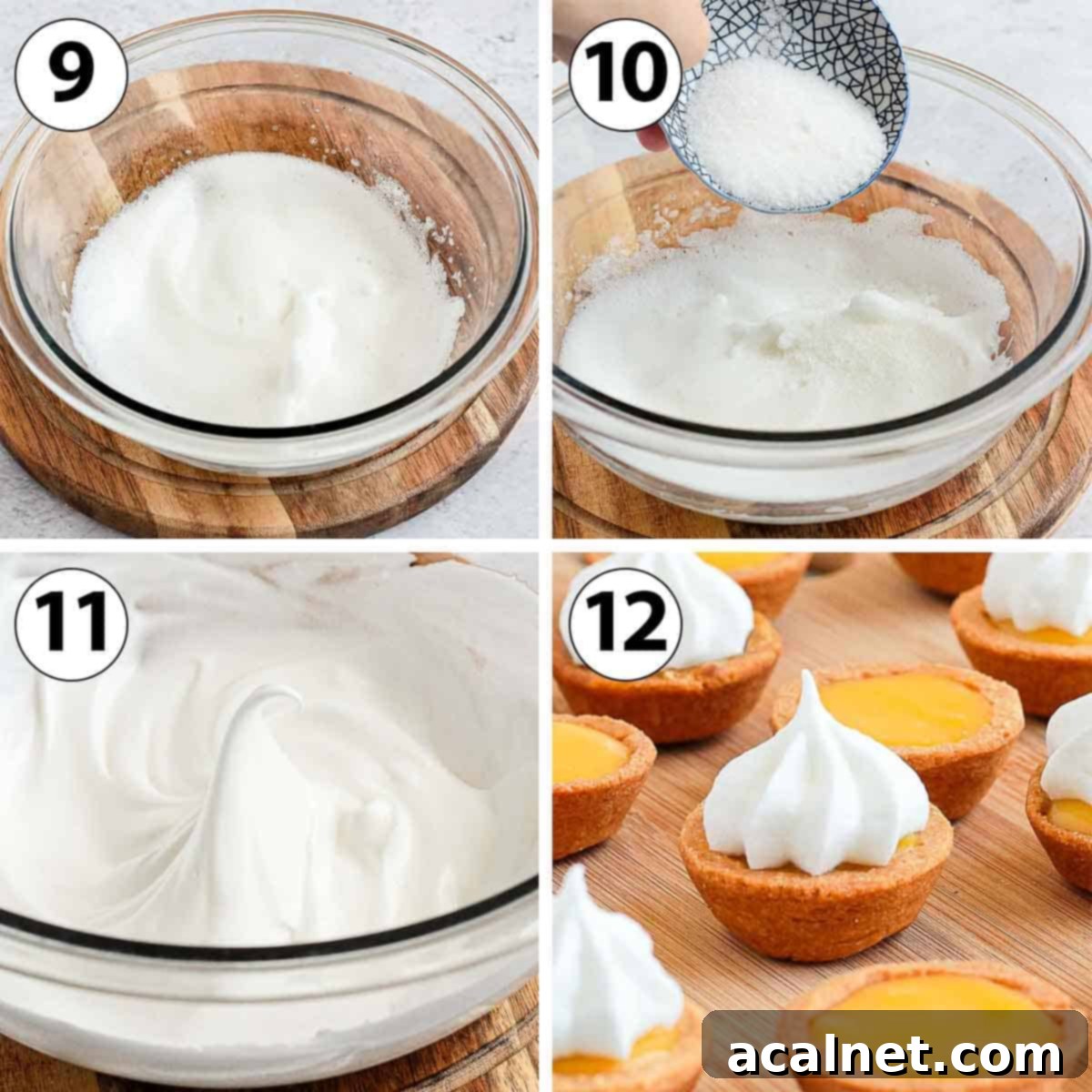Irresistible Mini Lemon Meringue Tarts: The Perfect Bite-Sized Dessert
Prepare to delight your taste buds with these exquisite Mini Lemon Meringue Tarts. Each bite offers a harmonious blend of textures and flavors: a rich, buttery shortcrust pastry shell, a vibrant and tangy lemon curd filling, and a fluffy, sweet French meringue topping, lightly toasted to perfection. These classic mini lemon meringue pies are not just a dessert; they are a celebration in miniature, making them an ideal choice for any party, birthday gathering, or festive holiday dessert table. Their individual size makes them incredibly easy to serve and enjoy, ensuring a sophisticated touch to your culinary spread.

[feast_advanced_jump_to]
Why These Mini Lemon Meringue Tarts Are a Must-Try
These Mini Lemon Meringue Tartlets are consistently a crowd-pleasing dessert, and for good reason. They offer an unparalleled combination of textures and flavors that are simply irresistible. Imagine the satisfying crunch of the buttery shortcrust pastry, followed by the smooth, vibrant, and utterly tangy lemon curd, all crowned with a delicate, airy, and sweet toasted meringue. It’s truly the perfect bite-sized treat, offering a complex dessert experience in a convenient, individual portion.
Ideal for any party, gathering, or special holiday celebration, these mini lemon tarts are guaranteed to impress your guests and leave them asking for the recipe. Their compact size makes them incredibly easy to serve and eliminates the need for cutting, making them a stress-free addition to any dessert spread. Like my popular Lemon Curd Tartlets, these lemon meringue versions feature a homemade, rich, and crispy Shortcrust Pastry (Pâte Sablée) base, baked perfectly in a Mini Muffin Tin to create charming Mini Tartlet Shells. These are then generously filled with a bright and Tangy Lemon Curd, which provides that essential zing, and finally topped with a lightly toasted, sweet French Meringue for a beautiful finish and a balancing sweetness.
One of the best aspects of this recipe is the flexibility it offers. Both the buttery pastry crust and the luscious lemon curd can be prepared in advance, significantly reducing your workload on the day of your event. This means you only need to assemble and add the meringue fresh before serving, ensuring maximum flavor and appeal. And for those who love a grand display, wouldn’t these look absolutely adorable served alongside their larger counterpart, the Lemon Curd Tart with Meringue? They offer a delightful and convenient way to enjoy a classic dessert without the fuss.

Essential Ingredients for Perfect Mini Lemon Meringue Bites
Crafting these delectable Mini Lemon Meringue Bites involves three distinct yet perfectly complementary elements. Using high-quality ingredients for each component is key to achieving that exquisite, balanced flavor profile.
- Tartlet Shells: The foundation of our mini pies is a classic Pâte Sablée, a French shortcrust pastry known for its rich, buttery taste and crumbly texture. This delightful crust is made from simple yet essential ingredients:
- Plain/All-Purpose Flour: Provides the structure.
- Icing Sugar (Powdered Sugar): Adds sweetness and a tender crumb. Ensure it’s sifted to prevent lumps.
- A Pinch of Salt: Balances the sweetness and enhances flavor.
- Unsalted Butter (very cold): Crucial for that desired flakiness and rich flavor. Keep it cold to prevent overworking the dough.
- An Egg: Binds the dough together.
Since we are making mini lemon pies, you can elevate the citrus flavor by adding some extra Lemon Zest directly into the pastry crust. This subtle addition will tie the different layers of lemon flavor together beautifully.
- Lemon Curd: The star of these mini tarts is a vibrant and tangy lemon butter (lemon curd). My recipe leans towards a delightful tanginess with a lower sugar content, allowing the fresh lemon flavor to shine through. The ingredients include:
- Fresh Lemon Juice & Zest: The core of the lemon flavor and tang. Always use freshly squeezed juice and finely zested lemons for the best aroma and taste.
- Egg Yolks: Provide richness, color, and act as a natural thickening agent for a silky-smooth consistency.
- Granulated Sugar: Sweetens the curd and balances the tartness. If you prefer a sweeter curd, feel free to increase the sugar quantity to your liking.
- Unsalted Butter: Contributes to the luxurious, creamy texture and adds a wonderful depth of flavor.
- Meringue Topping: A light and airy French Meringue provides the perfect sweet counterpoint to the tangy lemon curd. It’s surprisingly simple to make with just three ingredients:
- Egg Whites: Whipped to create the fluffy texture. Ensure your bowl and whisk are perfectly clean and free of any fat.
- A Pinch of Salt (or Cream of Tartar): Helps stabilize the egg whites, allowing them to whip up higher and hold their shape better.
- Caster Sugar (Fine White Granulated Sugar): Dissolves easily into the egg whites, creating a glossy, stable meringue.

Step-by-Step Guide to Making Mini Lemon Meringue Pies
Creating these delightful Mini Lemon Meringue Tarts is a rewarding process, broken down into three main, manageable steps. For convenience, both the mini pie crusts and the lemon curd filling can be prepared ahead of time, allowing for a smoother assembly on the day of serving. However, the meringue topping is best added just before serving to maintain its light, airy texture and prevent it from melting.
1. Crafting the Mini Tartlet Shells
For this recipe, I highly recommend my classic French Pâte Sablée (Shortcrust Pastry) recipe, which yields wonderfully crisp and buttery shells. Alternatively, a Pâte Sucrée (Sweet Shortcrust Pastry) can be used for a slightly sweeter base. If you’re short on time or prefer a shortcut, a store-bought pre-made shortcrust pastry will also work, though homemade offers superior flavor and texture.
While the pastry can be made by hand, I personally find using a food processor to be much quicker, cleaner, and easier. You can find detailed step-by-step instructions for making it by hand here if you prefer.
- Step 1: Prepare the Pastry Dough. (Corresponds to Photo 1) Begin by combining the all-purpose flour, icing sugar, and a pinch of salt in the bowl of your food processor. Pulse a few times to ensure they are well mixed. Next, add the very cold unsalted butter, cut into small cubes. Process until the mixture resembles fine breadcrumbs. Finally, add the room temperature egg and pulse until a loose dough just starts to come together. Be careful not to overmix, as this can lead to a tough pastry.
- Step 2: Chill and Roll the Dough. Gently gather the dough into a large ball and flatten it slightly. Place it between two sheets of baking paper (lightly flouring if you find it sticky) and roll it out thinly into a large circle using a rolling pin. Aim for a thickness of about 2 to 3 mm (1/16 to 1/8 inch) for a perfectly crisp crust that isn’t too heavy. Transfer the rolled dough, still between the baking paper, to a flat tray and refrigerate for at least 1 hour. This chilling step is crucial to prevent the pastry from shrinking during baking.
- Step 3: Cut the Tartlet Disks. (Corresponds to Photo 2) Once chilled, use a small, round (or fluted) cookie cutter to cut out uniform disks of pastry. Each disk should be at least as wide as the opening of your Mini Muffin Tin, or preferably slightly larger, to allow for pressing into the cavities.
- Step 4: Form the Tartlet Shells. (Corresponds to Photo 3) Carefully slide each pastry disk into the individual openings of the Mini Muffin Tin. Gently press the pastry onto the bottom and up the sides of each cavity, ensuring there are no air bubbles trapped underneath. The pastry should adhere nicely to the edges. If necessary, use a small, sharp knife to trim any excess pastry from the top edges for a clean finish. To prevent puffing during baking, dock (prick) the bottom of each pastry shell several times with a small fork. Return the entire muffin tin to the fridge for at least another 1 hour of chilling, or even longer. This second chill is vital for maintaining their shape.
- Step 5: Blind Bake the Shells. (Corresponds to Photo 4) Preheat your oven to 160°C/325°F. While the oven preheats, place the mini muffin tin with the chilled pastry shells into the freezer for about 10-15 minutes. This extra chill helps prevent shrinkage. Line each pastry shell with a small piece of scrunched-up baking paper (scrunching it first makes it easier to fit into the small cavities) and fill with baking weights, dry beans, or rice. Bake for 10 minutes, then carefully remove the weights and baking paper. Continue baking for an additional 10 minutes, or until the shells are dry, lightly golden brown, and feel crisp to the touch. Once baked, let them cool completely in the muffin tin before removing. For more in-depth tips on using a muffin tin to make perfect mini tartlet shells, refer to this guide.

2. Preparing the Tangy Lemon Curd Filling
The luscious Lemon Curd Filling can be prepared while your pastry is chilling, or after the tartlet shells have been baked and are cooling. Its vibrant flavor is what makes these mini lemon meringue pies truly special.
- Step 1: Combine and Heat Initial Ingredients. (Corresponds to Photo 5) In a small saucepan, combine the fresh lemon juice, lemon zest, egg yolks, and granulated sugar. Place the saucepan over low heat. Continuously whisk this mixture for about 3 to 5 minutes, or until the sugar has fully dissolved and the liquid begins to slightly thicken. It’s crucial to maintain a low heat and keep whisking to prevent the eggs from scrambling. We want a smooth, creamy curd, not cooked egg bits!
- Step 2: Incorporate the Butter. (Corresponds to Photo 6) Slowly add the very cold unsalted butter, cut into small cubes, to the saucepan, a little bit at a time. Whisk thoroughly until each addition of butter is fully melted and incorporated into the lemon mixture before adding more. This gradual process helps to emulsify the curd, resulting in a smooth and rich texture.
- Step 3: Thicken the Curd. (Corresponds to Photo 7) Continue to whisk the mixture constantly over low heat for an additional 5 to 15 minutes, or until the curd has visibly thickened to your desired consistency. The exact time will vary depending on your stove’s heat. You can check for readiness using a food thermometer (it should reach 82°C / 180°F) or by performing the “spoon test”: dip the back of a spoon into the curd, then draw a line with your finger across the spoon (be careful, it’s hot!). If the line remains clear and the curd doesn’t drip back over it, your curd is ready. If it drips, continue cooking for a few more minutes.
- Step 4: Strain for Smoothness. (Corresponds to Photo 8) For an exceptionally smooth and lump-free lemon curd, immediately pour the cooked curd through a fine-mesh sieve into a clean bowl or directly into your baked tartlet shells. This step ensures any tiny bits of cooked egg or zest are removed.
- Step 5: Fill and Chill. Either pour the warm lemon curd directly into your cooled, baked tartlet shells, or store it in an airtight container in the fridge for up to 3 days. If chilling the curd separately, you may need to gently warm it slightly in the microwave for a few seconds before filling the tart shells, as it will be easier to pour when more fluid. Once the tartlets are filled, place them in the fridge to set for a minimum of 2 hours before adding the meringue and serving. This allows the curd to firm up properly.

3. Finishing with French Meringue Topping
The French Meringue topping is the crowning glory of these mini lemon meringue tarts. It should be prepared and piped just before serving, as meringue tends to soften and “melt” if left in the fridge for too long. For the best presentation and texture, make this the final step in your preparation.
- Step 1: Whip Egg Whites to Soft Peaks. (Corresponds to Photo 9) Ensure your mixing bowl (or the bowl of your stand mixer) and whisk attachment are impeccably clean and completely free of any grease or egg yolk, as this can prevent the egg whites from whipping properly. Place the egg whites and a pinch of salt (or cream of tartar for extra stability) into the bowl. Begin whisking on medium-low speed, gradually increasing to a medium speed. Continue to whisk until you achieve soft peaks – the egg whites should be voluminous and resemble shaving cream, holding their shape but with the tip gently flopping over.
- Step 2: Gradually Add Sugar and Whip to Stiff Peaks. (Corresponds to Photo 10) With the mixer still running, slowly add the caster sugar, a small amount at a time. Once all the sugar has been incorporated, increase the speed to high. (Corresponds to Photo 11) Continue whisking until the meringue forms stiff, glossy peaks. When you lift the whisk, the meringue should stand straight up. To test for readiness, rub a small amount of meringue between your fingers – you shouldn’t feel any sugar granules. The meringue should be shiny and stable.
- Step 3: Pipe the Meringue. (Corresponds to Photo 12) Transfer the freshly prepared meringue into a piping bag fitted with your desired nozzle. A small star-shaped piping nozzle works wonderfully for creating elegant swirls. Carefully pipe the meringue over each chilled tartlet. Ensure the lemon curd filling has set for at least two hours before adding the meringue to prevent the curd from mixing with the meringue.
- Step 4: Toast and Serve. Using a kitchen blowtorch, gently toast the meringue on each tartlet until it achieves a beautiful, lightly golden-brown color. You can toast it more or less to your personal liking. Serve the Mini Lemon Meringue Tarts immediately after toasting. If placed back in the fridge at this point, the meringue will begin to weep and lose its desirable texture. Enjoy these delightful treats fresh!

Mini Lemon Meringue Tarts: Your Questions Answered
Absolutely! If you’re looking to save time or prefer not to make your own pastry from scratch, using pre-made mini pie shells is a fantastic option. Just ensure they are of good quality to provide a sturdy and delicious base for your lemon meringue tarts. While homemade pastry offers an unparalleled buttery flavor and crisp texture, store-bought shells will still allow you to enjoy this delightful dessert with minimal effort.
No, you don’t necessarily need a specialized tartlet pan! I simply used a standard mini muffin pan, which is widely available and serves perfectly for creating these small, individual shells. If you don’t own a mini muffin pan, you can easily adapt this recipe to make larger lemon curd tartlets by using a regular-sized muffin tin, as demonstrated in my Lemon Curd Tartlets recipe. Just be aware that the baking times for the shells might need slight adjustments for larger sizes.
Yes, absolutely! While I personally prefer to make my own lemon curd because it allows me to precisely control the level of tanginess and sweetness – I often find store-bought versions to be overly sweet – using a high-quality pre-made lemon curd is a perfectly acceptable shortcut. It’s a simple and effective way to significantly speed up the preparation of these Mini Lemon Meringue Tarts, making them an even quicker treat to assemble and enjoy.
A kitchen blowtorch will certainly give you the most even and professional-looking browning for your meringue. However, if you don’t have one, you can still achieve a lovely toasted effect using your oven’s broiler (grill function). Place the tartlets on a baking sheet and carefully slide them under a preheated broiler for just a couple of minutes. It is crucial to watch them very closely, as meringue can burn or melt quite quickly under direct heat. Keep a constant eye on them until they reach your desired golden-brown color.

Expert Tips & Tricks for Perfect Mini Lemon Meringue Tarts
Achieving bakery-quality Mini Lemon Meringue Tarts is easy with a few insider tips:
- For a Thicker, More Set Lemon Filling: If you prefer your lemon curd to be particularly firm or worry about it being too loose, you can add 1 tablespoon of cornstarch (cornflour) along with the sugar at the beginning of the lemon curd cooking process. Whisk it in thoroughly before heating, and it will help create a more stable, thicker consistency.
- Optimal Meringue Topping Timing: Always pipe and toast the French Meringue Topping just before you plan to serve the Mini Lemon Meringue Tarts. French meringue is delicate and tends to “weep” or melt when exposed to humidity or refrigeration for too long. For a more stable meringue that holds up better in the fridge, consider making an Italian Meringue, which involves a hot sugar syrup for added stability.
- Adjusting the Tang/Sweetness: This recipe is designed for a wonderfully tangy lemon curd, which I find balances beautifully with the sweet meringue. If you desire an even tangier bite, sprinkle a little freshly zested lemon directly over the finished meringue before serving. Conversely, if you prefer a sweeter profile, feel free to slightly increase the sugar quantity in your lemon curd recipe to suit your taste.
- Flavor Variations: Don’t limit yourself to just traditional lemons! Get creative and switch things up by using other citrus fruits. Meyer lemons offer a slightly sweeter, more floral note, while limes will give you a bolder, more exotic tang. Oranges can provide a delightful, less acidic sweetness for a unique twist on this classic dessert.
- Preparation is Key: Remember that both the tartlet shells and the lemon curd can be prepared a day or two in advance. This makes the assembly process on the day of your event much quicker and more enjoyable. Store the baked shells in an airtight container at room temperature, and the chilled lemon curd in an airtight container in the fridge.
- Perfect Piping: For a beautiful presentation, practice your piping technique. A star tip creates lovely ridges, but a round tip can give a classic smooth dome. Don’t be afraid to experiment with different patterns or heights for visual appeal.
Storing & Freezing Your Mini Lemon Meringue Tarts
Thoughtful preparation and proper storage can make enjoying these Mini Lemon Meringue Tarts a breeze.
Advance Preparation: Both the Lemon Curd Filling and the Mini Tart Shells are excellent candidates for making ahead. The homemade lemon curd can be stored in an airtight container in the fridge for up to 3 days. The baked tartlet shells can be kept at room temperature in an airtight container for up to 24 hours. While they will last longer, their optimal crisp texture is best enjoyed within this timeframe.
Freezing Components: For even longer storage, the tartlet shells can be frozen. I recommend freezing them unbaked for the best texture after baking. To do so, form the shells in the muffin tin as instructed, then freeze them solid. Once frozen, you can pop them out of the tin and store them in an airtight freezer bag for up to 1 month. When ready to bake, place them directly from the freezer into a preheated oven (you might need to add a few extra minutes to the blind baking time). The lemon curd can also be frozen for up to 1 month in an airtight container; thaw it in the fridge overnight before use.
Storing Assembled Tarts: Once the Mini Tartlet Shells are filled with lemon curd, they should be stored in the fridge for up to 24 hours to keep the curd firm and fresh. However, the Meringue Topping should always be added just before serving. This is crucial because French meringue tends to “weep” and soften considerably when refrigerated. For the best visual appeal and textural integrity, only torch and serve once the meringue is freshly piped.

Discover More Mini Tart Recipes
- Mini Chocolate Tarts
- Orange Tartlets
- Puff Pastry Apple Tartlets
- Easy Cherry Tartlets with Puff Pastry
- Pear Frangipane Tartlets
- Chocolate Orange Tartlets
- Raspberry Chocolate Tartlets
- Mini Fruit Tarts
- Salted Caramel Tartlets
- Mini Chocolate Caramel Tarts
Made this recipe?
Let us know if you liked it by leaving a comment below, and tag us on Instagram @a.baking.journey with a photo of your creation!
Recipe Card: Mini Lemon Meringue Tartlets

Mini Lemon Meringue Tartlets
Print Recipe
Ingredients
Mini Tart Shells
- 250 gr (1 2/3 cup) Plain / AP Flour
- 50 gr (1/2 cup) Icing Sugar, or powdered sugar – sifted
- 1 pinch Salt
- 120 gr (1/2 cup) Unsalted Butter, very cold
- 1 Egg, at room temperature
Lemon Curd
- 4 Egg Yolks
- 100 gr (1/2 cup) Caster Sugar, or fine white granulated sugar
- 125 ml (1/2 cup) Lemon Juice, about 3 Lemons, plus zest to taste
- 75 gr (5 tablesp.) Unsalted Butter
Meringue
- 1 Egg White
- 1 pinch Salt
- 25 gr (2 tablesp.) Caster Sugar, or fine white granulated sugar
Instructions
Mini Tart Shells
- Place the Flour, Icing Sugar and Salt in the bowl of your Food Processor and pulse to combine (see note 1 if making by hands). Add the cold Butter cut into small cubes, then blend until get very small crumbs.
- Add the Egg (optionally pre-whisked separately) and slowly pulse until a dough starts to come together (see note 2).
- Assemble the pastry into a large ball, place between two sheets of baking paper and roll into a large disk about 2 to 3mm (1/16 to 1/8 inch) thick. Place on a flat tray and leave in the fridge to chill and rest for at least 1 hour, or up to 24 hours.
- Using a Round Cookie Cutter, cut out small disks of pastry at least as wide as the openings of the mini muffin tin. Gently slide the pastry inside the mini muffin tin and press on the bottom/edges to remove any air bubbles. Dock the pastry (poke the bottom with a fork) then place back in the fridge to rest for at least 1 hour, or up to 24 hours.
- Preheat your oven on 160°C/325°F and place the pastries in the freezer in the meantime. Line each pastry with a small piece of scrunched up baking paper and fill with baking weights, dried beans or rice. Bake for 10 minutes, then remove the weights and baking paper and bake for an additional 10 minutes or until fully baked (see note 3). Set aside to cool down.
Lemon Curd
- Place the Egg Yolks, Sugar and Lemon Juice & Zest in a small pot. Whisk to combine then turn on low heat. Whisk for a few minutes or until the liquid starts to slightly thicken and the sugar has dissolved – about 3 to 5 minutes.
- Slowly add the very Cold Butter cut into small cubes, a little bit at the time. Whisk until melted and combined before adding more.
- Cook on low heat for 5 to 15 minutes or until the curd has thickened, making sure to continuously whisk (see note 4). Taste and adjust the level of sweetness if required. Pour through a thin-mesh sieve to remove any lumps.
- Pour straight away inside the cooled down pastry shells (see note 5) then place in the fridge to set for at least 2 hours, or up to 24 hours before serving.
French Meringue
- Place the Egg White and Salt in the clean bowl of your Mixer (or a large mixing bowl if using a hand mixer). Whisk on medium low to medium speed until you reach very soft peaks, slowly increasing the speed.
- When the egg white resembles the consistency of shaving cream, slowly add the Sugar a little bit at the time while whisking, then increase the speed to high and keep whisking until you reach stiff peaks (see note 6).
- Transfer the Meringue into a Piping Bag fitted with a small Star-Shaped Nozzle (or the piping nozzle shape of your choice) and pipe over each mini tart.
- With a kitchen blowtorch, toast each meringue until lightly golden and serve straight away (see note 7).
Would you like to save this recipe?
We’ll email this post to you, so you can come back to it later!
Notes
Yield: Depending on the size of your mini muffin pan and how thick/thin you roll the pastry, you will get approximately 20 to 30 mini lemon meringue tarts.
Instruction Notes:
- Pastry by Hand: If making the pastry by hand, follow the same instructions but cut the cold butter into the dry ingredients either by rubbing the butter and dry ingredients between your palms/fingers until you get fine crumbs, or by using a pastry blender.
- Dough Consistency: Stop mixing as soon as the pastry just starts to come together to avoid overworking the dough, which can make it tough. If you press some lumps of pastry together, they should stick. If the dough seems too dry, add a tiny bit of very cold water, a teaspoon at a time. If it’s too sticky, add a little more flour.
- Fully Baked Shells: The baking time for the shells can vary based on your oven’s calibration and the exact thickness of your pastry. The shells are fully baked when they feel dry to the touch, are lightly golden brown, and can be easily removed from the muffin pan.
- Lemon Curd Thickness Test: Always cook lemon curd on very low heat to prevent burning or scrambling the eggs. To check if the curd is cooked, dip the back of a spoon in it and draw a line with your finger (be careful, it will be hot). Tip the spoon down; if the line remains clear and the curd doesn’t drip back over it, it’s ready. If it drips, it needs to cook for longer. A food thermometer can also confirm readiness; the curd should reach 80-82°C (175-180°F).
- Chilling Curd: If you’re not filling the shells immediately, pour the curd into a clean jar, cover the surface with plastic wrap (to prevent a skin from forming), and store in the fridge. When ready to use, slightly reheat the curd in the microwave for a few seconds to make it more fluid and easier to pour into the shells.
- Perfect Meringue: The finished meringue should look shiny and glossy, and when rubbed between your fingers, you shouldn’t feel any sugar granules, indicating it’s fully dissolved and stable.
- Toasting Meringue: The meringue should be added and toasted just before serving as it will start to slowly melt or “weep,” especially if placed in the fridge. If you don’t have a kitchen blowtorch, you can place the tartlets under your oven’s broiler (grill) for 2 to 3 minutes, but keep a very close eye on them to prevent burning or excessive melting.
Nutrition (per serving)
